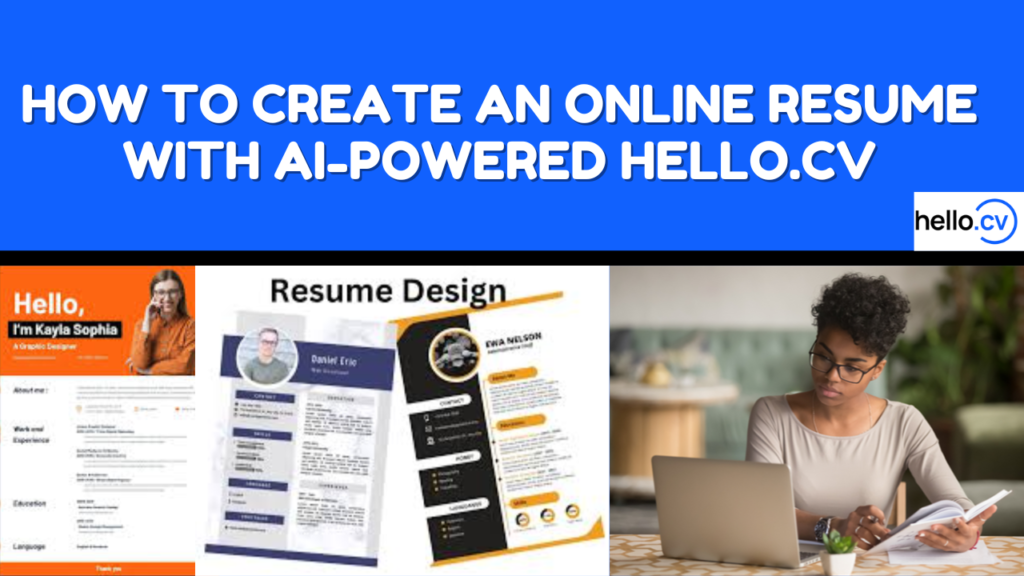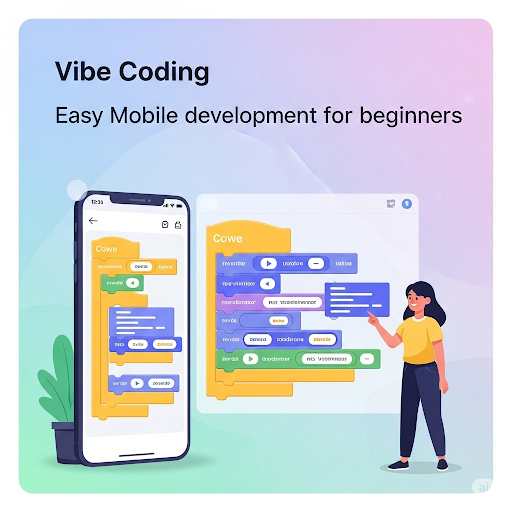Table of Contents:
- What is Vibe Coding?
- The Problem With Traditional App Development
- How Vibe Coding Solves It All
- Core Principles Behind Vibe Coding
- The Vibe Coding Tech Stack: What Powers It?
- Step-by-Step: Build Your First Mobile App With Vibe Coding
- Real-Life Use Cases: What You Can Build Today
- Tools, Platforms & Resources You Need
- Tips to Go From Idea to App Store in 7 Days
- Final Thoughts: The Future Belongs to Vibe Coders
1. What is Vibe Coding?
Vibe Coding is a new era of app development where intuition meets technology. It’s a creative, AI-assisted, no-code/low-code approach to building apps using natural language, visual interfaces, and “flow-first” logic.
In short:
Vibe Coding is the art of building apps by vibes — not syntax.
It empowers non-developers to build full-fledged mobile apps without needing to know how to code — just like Canva empowered non-designers to create stunning graphics.
Instead of staring at lines of Java or Flutter code, vibe coders think in feel, function, and flow:
- What should the user experience feel like?
- What should happen when they tap this?
- What vibe are we creating with this app?
Then, tools like FlutterFlow, Bravo Studio, Thunkable, Glide, and AI copilots like ChatGPT or Replit AI turn your ideas into working mobile apps.

2. The Problem With Traditional App Development
Let’s face it: traditional app development is slow, expensive, and inaccessible.
- High Costs: Hiring developers can cost thousands of dollars per app version.
- Steep Learning Curve: Learning Swift, Kotlin, or Flutter takes months.
- Rigid Structures: You must follow strict development rules, even for simple apps.
- Time-Consuming: MVPs take weeks to ship, delaying testing and feedback.
This is why 90% of aspiring app creators give up before they start.
3. How Vibe Coding Solves It All
Vibe Coding flips the script:
| Problem | Vibe Coding Solution |
|---|---|
| Can’t code? | Use drag-and-drop tools or speak your idea to AI. |
| No budget? | Build apps for $0 using free tools. |
| No design skills? | Use pre-built templates and AI designers. |
| No time? | Ship MVPs in days, not months. |
Vibe Coding makes app creation as intuitive as:
- Creating a story on Instagram.
- Organizing ideas on Notion.
- Chatting with an AI assistant.
4. Core Principles Behind Vibe Coding
To understand vibe coding is to understand the 5 pillars that make it work:
- Visual-First Development: You design your app’s interface and interactions visually.
- Flow-Logic Thinking: You connect screens using action flows, like “when button clicked → go to screen → update data”.
- Natural Language Commands: Tell AI what you want: “Create a login page with Google Sign-In.”
- Component Reusability: Reuse blocks like forms, buttons, and APIs without repeating code.
- Real-Time Feedback: Test your app on your phone instantly.
5. The Vibe Coding Tech Stack: What Powers It?
Here’s a look at the tools enabling vibe coding:
| Purpose | Tools |
|---|---|
| Drag-and-Drop UI Builders | FlutterFlow, Thunkable, Glide, Bravo Studio |
| Backend & Database | Xano, Firebase, Supabase, Airtable |
| AI Copilot | ChatGPT, Replit AI, Gemini, GitHub Copilot |
| Design Inspiration | Figma, Canva, UI8, Untitled UI |
| Deployment | Expo, AppGyver, Pory, Google Play / App Store |
You don’t need all of them — just pick 2 or 3 and vibe with them.

6. Step-by-Step: Build Your First Mobile App With Vibe Coding
Let’s build a simple app together — “MoodCheck”, an app where users track their daily moods and journal their thoughts.
Tools:
- FlutterFlow (UI Builder)
- Firebase (Database)
- ChatGPT (for prompts and logic generation)
Step 1: Create the Flow
Open FlutterFlow → Start new project → Drag in:
- Splash screen
- Home screen (with mood emojis)
- Journal screen
- Calendar/history screen
Step 2: Connect Backend
Use Firebase to:
- Store mood data
- Save journal entries
- Create user accounts
Use ChatGPT prompts like:
“Write a Firebase rule for only the logged-in user to see their own entries”
Step 3: Add Logic with Vibes
Use visual logic like:
- “When emoji tapped → Save mood → Navigate to Journal screen”
- “On Journal submit → Save text entry → Show toast message”
Step 4: Test & Preview
Use FlutterFlow’s mobile preview or export to test on your phone.
Step 5: Deploy
One-click deploy to Android & iOS test builds.
Congratulations — your first Vibe Coded app is ready!
7. Real-Life Use Cases: What You Can Build Today
You can create surprisingly powerful apps with vibe coding:
- 🛍️ E-commerce store with Glide + Airtable
- 🧠 AI productivity tool using Replit + OpenAI
- 📅 Booking system with Bravo Studio + Airtable
- 🧘 Wellness tracker with Thunkable + Firebase
- 💬 Chatbot app using FlutterFlow + Dialogflow
Yes, even these can be built without writing complex code.
8. Tools, Platforms & Resources You Need
No-Code/Vibe Coding Tools:
- FlutterFlow – Best for scalable mobile apps.
- Thunkable – Great for Android/iOS with simple logic.
- Glide – Fastest for MVPs built from Google Sheets.
- Bravo Studio – For Figma lovers who want pixel-perfect apps.
Learning Resources:
- YouTube: “FlutterFlow Tutorials”, “Glide App Builder”, “Bravo Studio Walkthroughs”
- Communities: r/nocode, Twitter #nocode, IndieHackers
- Books: The Lean App Builder, The No-Code Revolution
9. Tips to Go From Idea to App Store in 7 Days
- Start with 1 Core Feature. Don’t build Uber — build one button that works.
- Use Templates. Use pre-built screens from tools like FlutterFlow Marketplace or Glide.
- Leverage AI. Ask ChatGPT to write backend rules, UX copy, and design suggestions.
- Test on Real Devices Daily. Preview progress and fix bugs as you go.
- Collect Feedback. Share MVP with 5 users before launching.
💡 Pro Tip: Use ChatGPT to ask “What should I fix before submitting to the App Store?” to spot errors early.
10. Final Thoughts: The Future Belongs to Vibe Coders
The next billion-dollar apps won’t be built by engineers locked in basements — they’ll be created by everyday people who understand problems deeply and use vibe coding to ship fast.
We are entering the “Creative Renaissance of App Building.”
With tools this powerful, it’s no longer about if you can build an app — it’s about what kind of experience you want to create.
You don’t need a Computer Science degree. You need vision, vibes, and the right tools.
So go ahead — open that builder, drag in that screen, and start creating.
The world needs your vibe.

